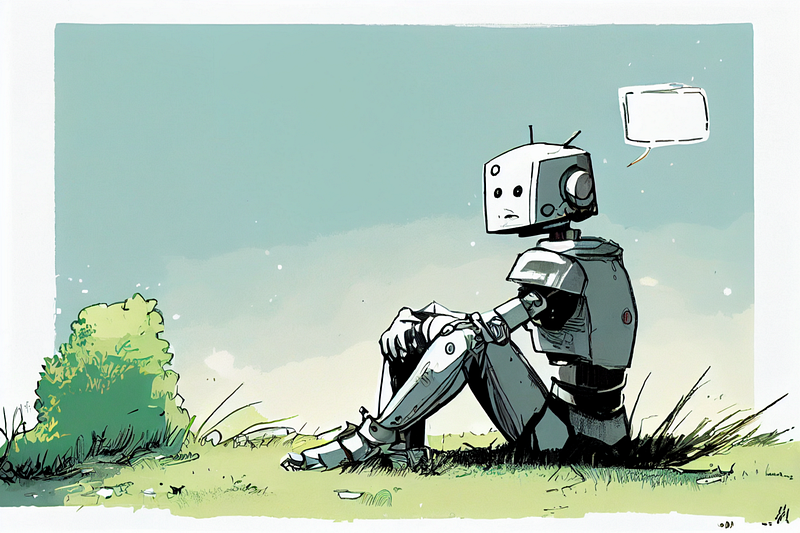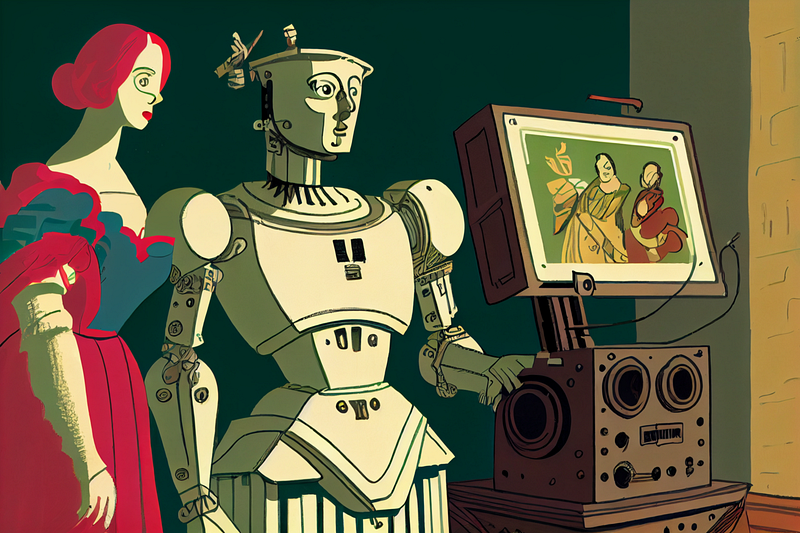Navigating the Ethical Landscape of AI in Design
Written on
Chapter 1: Understanding AI Ethics in Design
The rise of AI tools such as DALL-E 2, ChatGPT, and Midjourney is transforming how UX and product designers execute their projects. These technologies enable the swift gathering, analysis, and synthesis of extensive data, allowing designers to work at an extraordinary pace. Nonetheless, this innovation brings forward several ethical challenges that must be carefully considered. Designers should be cognizant of these issues and actively seek to address them.

Section 1.1: Privacy in the Age of AI
Data privacy remains a significant concern in the tech landscape. Various organizations have differing protocols regarding the handling and utilization of user data. AI systems thrive on input, necessitating that users provide relevant information for optimal performance. For instance, Midjourney’s image-to-image feature requires a reference image to function effectively, while ChatGPT can analyze data inputs to generate new ideas or titles based on user queries.
However, caution is advised when sharing sensitive information with these AI systems. The FAQ for ChatGPT explicitly warns users against disclosing private data, stating that conversations are utilized for training purposes and may be reviewed by OpenAI. This is a critical factor to contemplate, particularly regarding user confidentiality. In essence, it’s wise to refrain from using AI tools like ChatGPT for analyzing sensitive customer data, as maintaining consumer trust is invaluable.
Section 1.2: Recognizing Algorithmic Bias
Algorithmic bias is another pressing ethical concern in the realm of AI-driven UX design. The effectiveness of AI algorithms relies heavily on the quality of their training data; if this data is biased, the resulting AI applications will reflect those biases. Given that most AI models are trained on internet data, which is rife with inherent biases, designers must approach these technologies with a critical eye.
Blindly trusting AI tools can lead to UX outcomes that unfairly marginalize certain user groups, perpetuating existing societal inequalities. While the majority of AI models are not open-source, granting limited control over their training processes, designers have the responsibility to scrutinize how these tools are employed and the implications of their outputs.
The Ethical Implications of Artificial Intelligence
This video delves into the ethical considerations surrounding AI, highlighting the importance of responsible usage and awareness of potential biases.
Section 1.3: Cultural Bias in AI Models
The training datasets for models like ChatGPT predominantly feature English-language content from Western cultures, which can skew their outputs toward Western ideals and norms. This bias can hinder the model’s ability to accurately understand or generate content related to non-Western cultures, leading to a lack of representation.

Chapter 2: The Broader Social Implications of AI
The Ethical Implications of AI in Web Design
This video explores the social ramifications of AI technologies in web design, focusing on the balance between innovation and ethical responsibility.
Section 2.1: Social Considerations
In addition to data privacy and algorithmic bias, UX designers must also reflect on the wider social ramifications of AI. The automation facilitated by AI could lead to job displacement and economic upheaval. This raises complex questions about our future workforce and the role of AI in enhancing human capabilities rather than merely reducing costs.
Moreover, these technologies may reinforce existing social structures, potentially marginalizing those who do not speak English or lack access to technology. As we consider the implications for future generations, we must also ponder the increasing importance of equitable technology access.
Section 2.2: Towards Ethical AI Practices
To effectively navigate the intricate ethical landscape of AI in UX design, designers should actively engage with these issues and incorporate ethical considerations into their design processes. Continuous dialogue with peers and stakeholders can help ensure that design practices align with the greater good.
Ultimately, while AI can be programmed to exhibit ethical behavior, the onus lies on us to ensure that our outputs reflect responsible and ethical practices. Therefore, it’s imperative for designers to remain conscious of the ethical implications of AI technologies in their workflows.
Thank you for reading!
Ethics in AI is a vital and multifaceted topic. As someone eager to learn, I welcome any constructive feedback on my perspectives. Initiating conversations about ethics is essential, which is why I chose to address this topic. If you found this article insightful, consider following me or leaving a comment. I regularly write about design, AI, and career development.